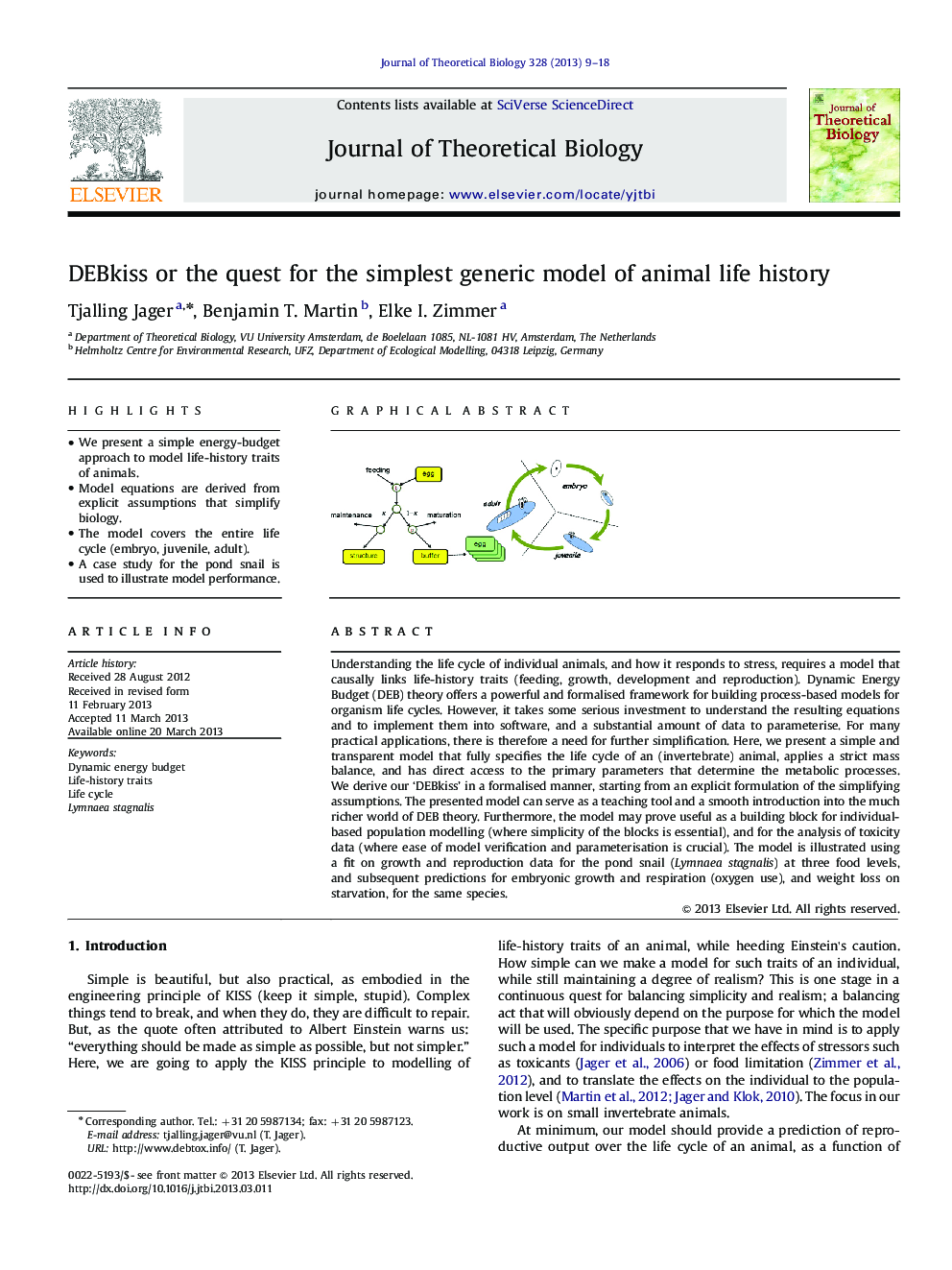| کد مقاله | کد نشریه | سال انتشار | مقاله انگلیسی | نسخه تمام متن |
|---|---|---|---|---|
| 4496392 | 1623882 | 2013 | 10 صفحه PDF | دانلود رایگان |

• We present a simple energy-budget approach to model life-history traits of animals.
• Model equations are derived from explicit assumptions that simplify biology.
• The model covers the entire life cycle (embryo, juvenile, adult).
• A case study for the pond snail is used to illustrate model performance.
Understanding the life cycle of individual animals, and how it responds to stress, requires a model that causally links life-history traits (feeding, growth, development and reproduction). Dynamic Energy Budget (DEB) theory offers a powerful and formalised framework for building process-based models for organism life cycles. However, it takes some serious investment to understand the resulting equations and to implement them into software, and a substantial amount of data to parameterise. For many practical applications, there is therefore a need for further simplification. Here, we present a simple and transparent model that fully specifies the life cycle of an (invertebrate) animal, applies a strict mass balance, and has direct access to the primary parameters that determine the metabolic processes. We derive our ‘DEBkiss’ in a formalised manner, starting from an explicit formulation of the simplifying assumptions. The presented model can serve as a teaching tool and a smooth introduction into the much richer world of DEB theory. Furthermore, the model may prove useful as a building block for individual-based population modelling (where simplicity of the blocks is essential), and for the analysis of toxicity data (where ease of model verification and parameterisation is crucial). The model is illustrated using a fit on growth and reproduction data for the pond snail (Lymnaea stagnalis) at three food levels, and subsequent predictions for embryonic growth and respiration (oxygen use), and weight loss on starvation, for the same species.
Figure optionsDownload as PowerPoint slide
Journal: Journal of Theoretical Biology - Volume 328, 7 July 2013, Pages 9–18